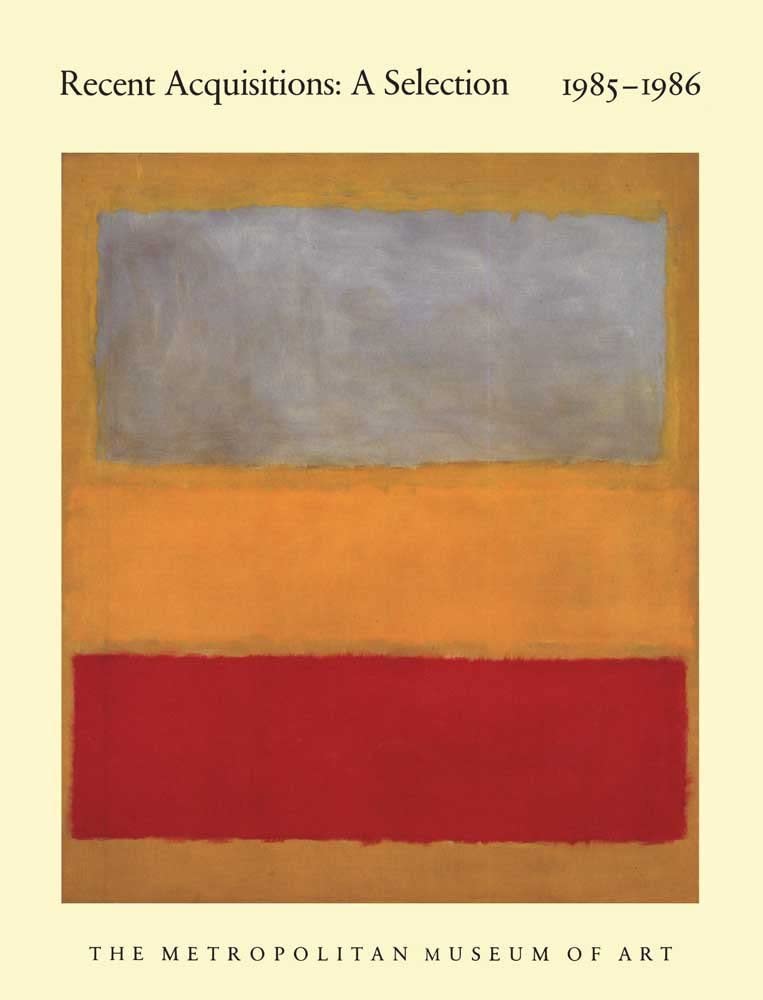Nearly every year since 1975, the Metropolitan Museum has published a selection of its notable acquisitions. This publication has proved to be an efficient vehicle for bringing to the public's attention the most important works of art added to the collections. However, the increasing cost of art on the one hand, together with limited funds for such purchases on the other, have inescapably diminished the number of truly noteworthy acquisitions. Concomitantly, the publication has become a forum for the discussion of artworks that—while filling important gaps in various departmental collections—are not in the first tier, and would likely have to wait patiently before otherwise appearing in print. Thus, the nature of the publications has unmistakably evolved. Indeed, as it now, in effect, has a twofold purpose, we have retitled it Recent Acquisitions: A Selection.
That said, we are nonetheless extraordinarily excited by two great collections that have enriched the Museum during the last year: archaic and early Chinese art from the Ernest Erickson Foundation, and twenty-four Egyptian reliefs from the collection of Norbert Schimmel. Mr. Schimmel has long been one of the Museum's foremost benefactors, giving generously to the Ancient Near East and Egyptian departments on many occasions. Since 1979 his entire collection of Amarna relief blocks has been on loan to the Museum, in a gallery specially given over to its display.
These limestone reliefs served as wall facings for the numerous public structures erected at Tell el Amarna in Middle Egypt by King Akhenaton (reign about 1379–1362 B.C.). To speed his ambitious building program—and in one of history's first instances of mass production—the blocks were intentionally cut to a uniform portable size. They are carved in a peculiar admixture of sunk relief and bas-relief characteristic of the period, and the scenes that they bear provide crucial information about the king's religious revolution, with its distinctive fusion of royal and divine elements. These exceptional reliefs combine sharp observation with a natural and whimsical style of execution, and, in their elaboration of state processions and courtly life, provide a rare glimpse of the innermost workings of the royal household in the latter part of the Eighteenth Dynasty.
We are also fortunate in that a gift from the Ernest Erickson Foundation of one hundred and fifty examples of ancient Chinese art has significantly strengthened the holdings of the Department of Asian Art. Mr. Erickson, who was a gifted scholar in his own right, collected judiciously in a number of different areas, but nowhere with more success than in the domain of Chinese art. His love of small, choice objects is admirably borne out by this selection, which encompasses jades, bronzes, porcelains, and bone implements principally from the Shan, Chou, and Han dynasties (16th century B.C.–A.D. 220). The collection also includes several paintings from the Yuan and Ming periods (A.D. 1279–1644). Mr. Erickson was convinced that his collection would "best serve the field and the New York area at large when ... installed in the permanent galleries at the Metropolitan." Regrettably this was not realized during his lifetime, but it will be when the collection is exhibited in the new galleries of ancient Chinese art, scheduled to open in 1988.
Lastly, I note that in this past year the Mark Rothko Foundation presented the Museum with nine of the artist's works on paper and four of his paintings. Not only were we extremely delighted with this gift, but it could not have been more timely, as we prepare for the opening in February 1987 of the Lila Acheson Wallace Wing for twentieth-century painting and sculpture. The Rothko works will join those by many other artists in this new exhibition space, where they may be studied and enjoyed under absolutely ideal conditions.
(This title was originally published in 1986/87.)





دیدگاه کاربران